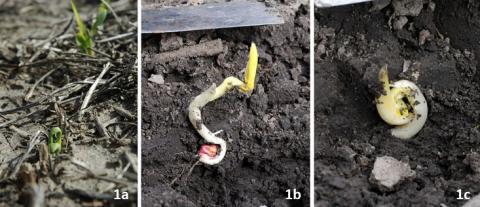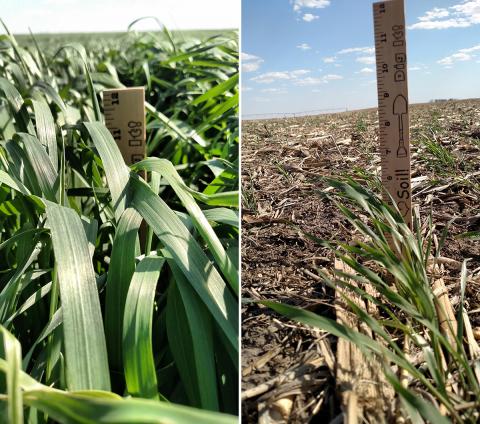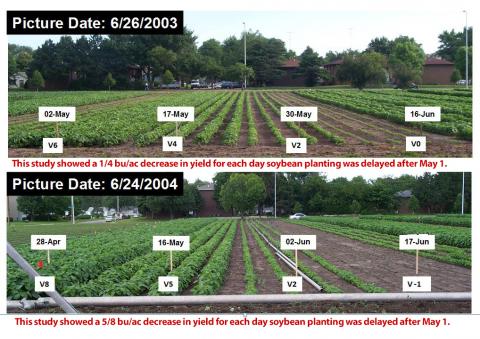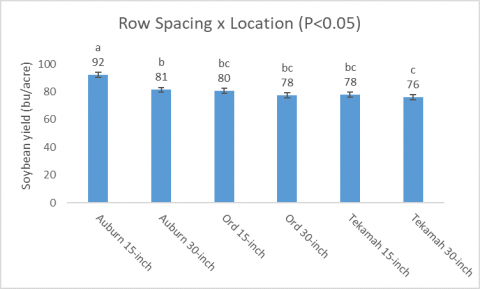Severe Storms and Hail-Damaged Crops: Steps for Making the Right Decisions
June 14, 2018
After recent severe storms that rolled across parts of Nebraska, growers are encouraged to wait 7-10 days to fully assess crop damage and determine next management steps. Research-based estimated yields from replanting now are included.
Weed Management and Cover Crop Field Day at SCAL
May 22, 2018
View demonstrations of new technologies and herbicides for weed control in corn, soybeans, and sorghum and cover crops effects on soil health and pest management at the June 27 Weed Management and Cover Crops Field Day. It will be held at the South Central Ag Lab near Clay Center.
Assessing Effects of Recent Dust Storm on Emerged Corn
May 17, 2018
This week several corn fields in south central Nebraska were surveyed to assess damage and longer term effects on stands after last week's high winds and resulting dust storms. While many plants were seriously injured, many would be expected to recover.
Integrating Cover Crops into a Corn and Soybean Cropping System
January 8, 2018
An article from the Proceedings of the 2018 Nebraska Extension Crop Production Clinics on recent research to understand the impact of planting dates, plant populations, and corn (Zea mays L.) hybrid comparative relative maturity (CRM) on corn growth, kernel moisture content, and corn yield prior to cover crops.
How Planting Date, Varieties Affect Spring Cover Crop Growth
May 4, 2018
Reduced spring growth resulting from delayed planting of small grain cover crops has been widespread throughout the western Corn Belt.
Amplifying Positive Impacts of Early Soybean Planting
April 19, 2018
The benefits of planting soybean near May 1 are well documented. Now, what are the next steps growers can take to further expand on these benefits? Are different maturity groups warranted? What groups are typically being used in irrigated and rainfed environments in Nebraska?

Cold Soil Temperature and Corn Planting Windows
April 12, 2018
With stormy conditions back in the picture, many growers may be concerned about planting corn into cold, wet soils? By checking weather forecasts and soil temperature at planting (in the field and online) and the cold tolerance of seed, growers can identify 48-hour windows of opportunity for planting.
Results from 2017 Soybean Study and Insights for 2018 Planting
February 22, 2018
University researchers report results from studies conducted on herbicide tolerance trait, row spacing (15-inch vs. 30-inch), and soybean maturities (early vs. late) at three locations of the Soybean Management Field Days in summer 2017.






